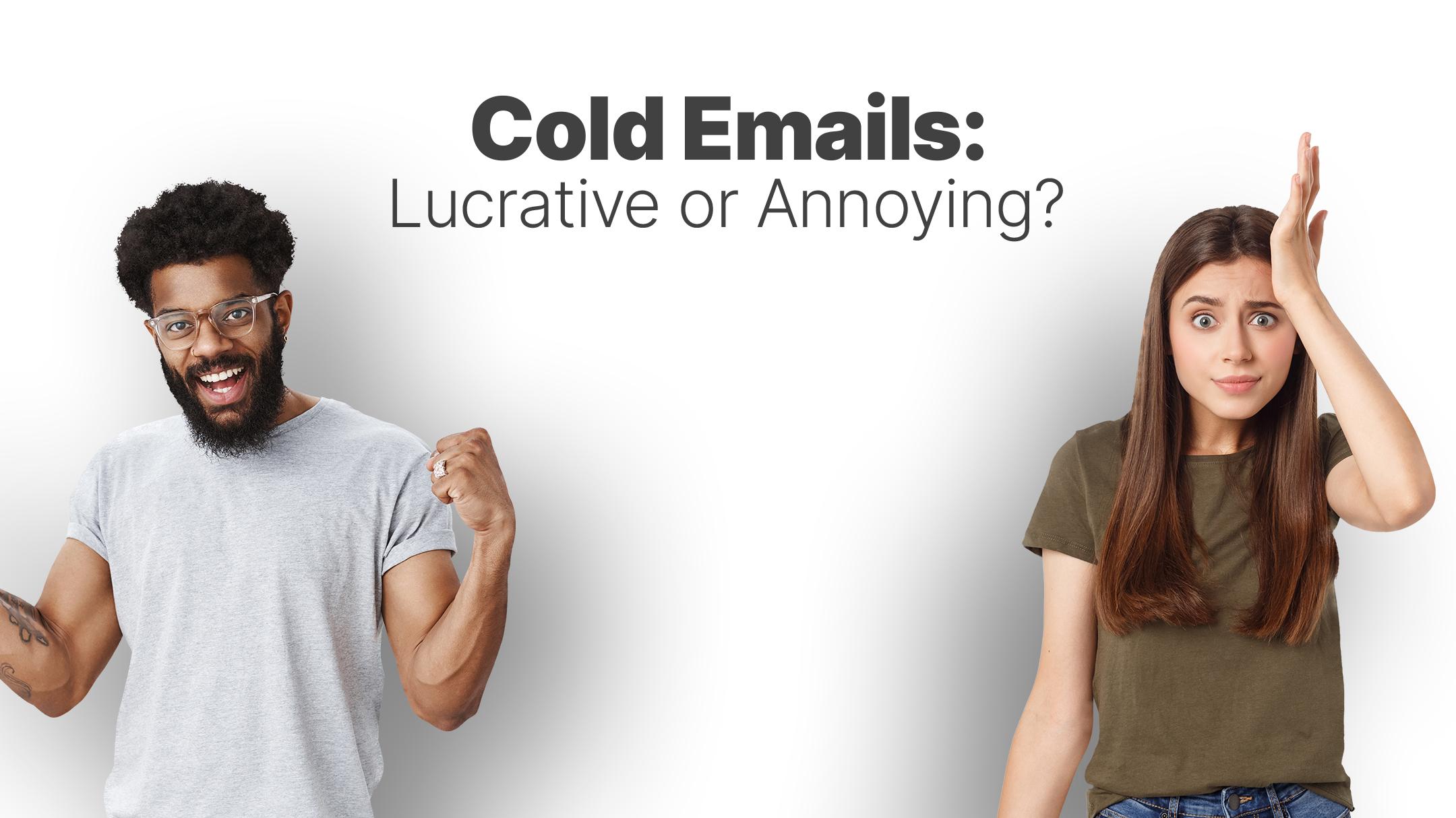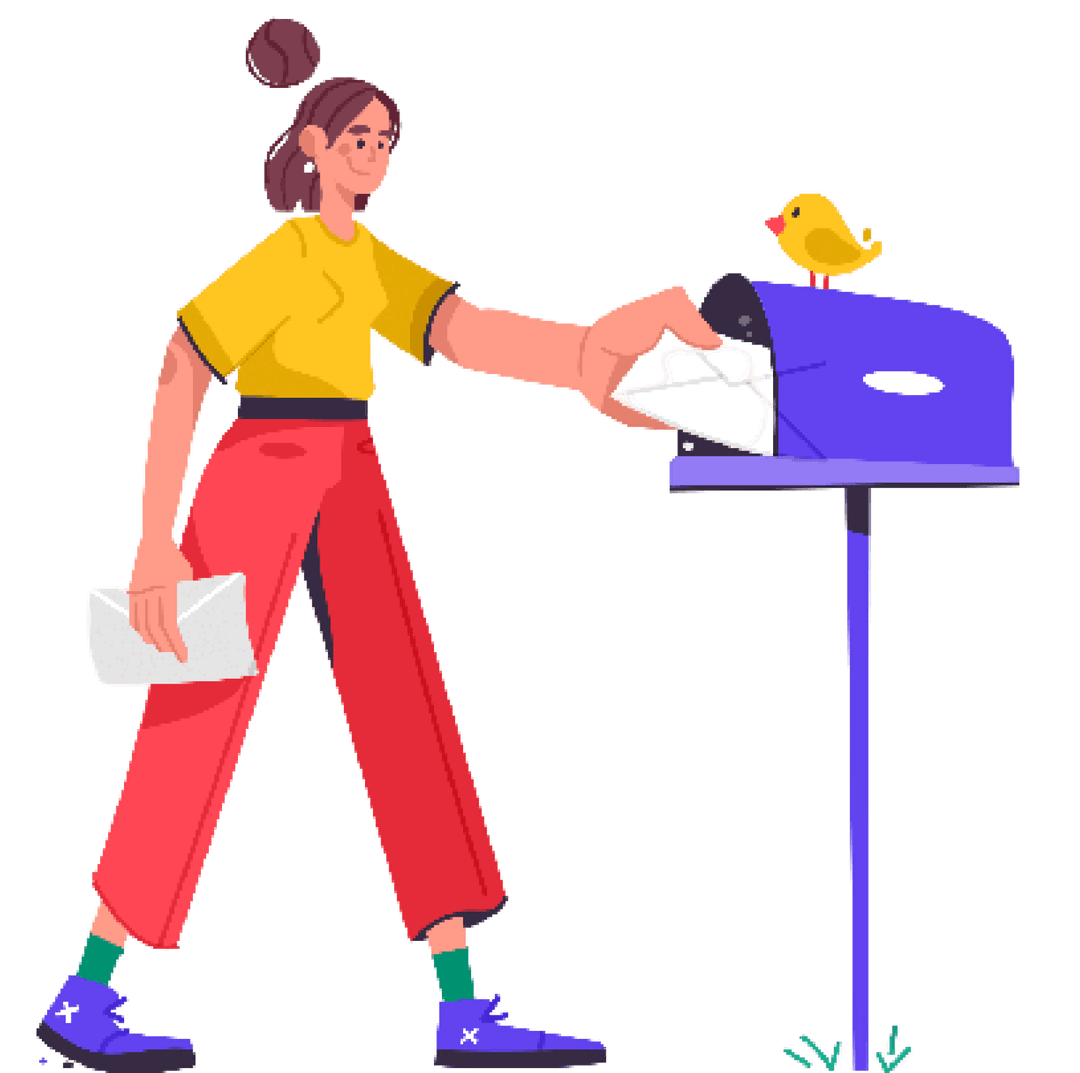
Cold emailing: Is it annoying or lucrative?
How do you talk to someone you don't know?
Email Marketing
How do you talk to someone you don't know?
Published:
Email Marketing
Anam Jalil
Share

We have been talking about annoying marketing tactics recently, and cold emails or unsolicited emails may be one of the tactics that top the list.
Sales teams often send potential customers emails without a prior relationship with them, to provide relevant information regarding a product/service and aim to close deals.
If you are lucky and reach the right person, cold emailing may be lucrative and if the sales team reaches the wrong person, they are likely to be found annoying and possibly even marked as SPAM.

Getting marked as SPAM causes your sender reputation to take a dive and you are more likely to land in spam folders rather than your prospect's inbox in the future. Therefore, the biggest pain point of sales reps and marketing professionals is that cold email marketing does not get many replies and many of their cold sales emails do not bypass the spam filter.
Is there something wrong with the sales funnel? the call-to-action? Are cold email subject lines unimpressive? Or are the cold leads irrelevant?
Gmass mentions that 1-5% cold emails get a response. So, if yours aren't... they might be annoying. However, there is a trick to the trade. Here is how you can write cold emails that warm the hearts of your recipients.
Cold email subject lines should be relevant to your content. Do not add click-bait subject lines or subject lines that are extremely vague and don't tell your prospects much about what is in the email. A cold email subject line like "We have a surprise for you" is annoying especially if you are contacting a busy person and the surprise isn't exactly up their alley.
Make sure your email body conveys value and is direct. Do not beat around the bush and mention things that are not relevant or interesting for your target audience. When you write a cold email, make sure you introduce yourself, why you are emailing, and what you want your prospect to do.
Try to say what you need to say in as few words as possible. An email is not like a blog post. You should not mention all details in the email body. Make your cold emails short and sweet and include links to extra information such as a guide or a blog post.
Automated follow-ups are okay but what's equally important is knowing the best time to send emails to maximize open and response rates, make sure you leave a few days of a gap in between your marketing emails. It is better to send a personalized follow-up email where you mention other details besides your recipient's company name. Mention an industry conference that would be relevant to them and then also mention a pain point and follow-up with the offer you made them.
Following General Data Protection Regulation procedures helps build trust with your prospects. They need to know their information will not be resold, kept, or used for spammy purposes.
Subject line promises should be kept and should be realistic. Extravagant promises that you can't keep are not the way to go and recipients are wary of promises that sound too good to be true. We have all heard them before and they rarely ever materialize, so it's best to avoid hyperbole.
Keep your target audience in mind. Sending a cold email to a person who is 60 plus about a pop concert may be considered annoying. You are likely to trigger spam filters on your next attempt if the person does not open your email, marks it as spam, or doesn't click-through.
Your call to action should be direct and strong. Do not leave much room for them to give you a negative response but don't be too pushy either. Forcing your prospect to choose a certain option, such as in passive-aggressive marketing messages, is ineffective in the long run.
When applying funny email strategies, it's crucial to balance humor with professionalism. Avoid overly complex, sarcastic, or potentially offensive jokes that might alienate your audience. Your aim should be to lightly entertain, not overwhelm or confuse. Ensure any humorous content naturally complements your message, reinforcing rather than detracting from your primary objective

It can be beneficial to mention a mutual connection in order to make yourself seem more authentic. However, don't throw too many names around.
Make sure you send follow-up emails through the same email address instead of using different email addresses each time. This confuses and annoys the recipient.
Cold calling or sending a cold email on a Monday morning is a big no-no! No one is fresh that day and no one wants to hear from a sales rep or a marketing manager selling them something they are not ready to buy.

Woodpecker has laid it on pretty thick. The reason why cold emails are annoying is that sales reps or marketing people email a generic email that shows they do not give a damn about you, but they expect you to give a damn about them. That's why a personalized cold email is much better.
As much as it is about reaching the right person, it is also about saying the right words. Make sure you introduce yourself and clearly mention your company name. No one wants to be contacted by someone they hardly know anything about.
Providing social proof for your feats can take you a long way. You need to illustrate what you have done for your customers. Add a testimonial, and statistics, and remember to add links to your company's social media profiles. No one trusts a company that is not on social media these days.
Mention something fun that your target audience may resonate with, whether it is the latest joke or whether it is a current event. Being humorous and relatable should be a big part of your cold email strategy. People love familiarity, so if you address their pain point with some good examples, they are likely to find you more relatable.
You are not sending a newsletter in cold email outreach. It is an email so it should look like one. Don't make it too pretty and don't use email templates with too many designs for a personal cold email. The heavier you make it, there is a higher chance that it will land in the spam folder.
Adding a physical address in the footer of your cold email can also improve authenticity and give your recipients the notion that you are a real company and a real person. You need to make them feel like they are conversing with a real person.
The prospect company should not be your main target. You should be aiming for writing a cold email to a person and addressing them personally. For example, if you walk into a room and say hello to everyone, you are likely to get one or two polite replies. If you speak to one person and address them, they would reply to you, even if only to be polite. That's the way you must structure your cold email campaigns. Talk to a person, not a company.
Your sales email should not be too salesy. As ironic as it sounds, no one actually wants to be sold to. They want to get more information about something and how to achieve something. Therefore, in your first cold email campaign, don't mention price. It's better to tell them what you are offering them and later discuss monetary aspects.
Personalize your subject line with the recipient's name or something about them. That is likely to make them more interested in opening your message.
Cold outreach should not sound cold. Be warm and friendly in the email. Appreciate them for their time and sound as human as possible, rather than sounding like a robot.
If your cold emailing efforts are fruitless, this is likely to affect your email deliverability and sender reputation in the future. Make sure you warm-up your email domain before sending a cold outreach campaign.
GoCustomer helps you do that within just a few days. Regardless of your email provider or that of your recipient, GoCustomer can improve your chances of landing in the Priority Inbox and it's all uphill from there.
Last but not the least, make sure you use the best outreach tools, check most cold email platforms for the best features, and always add your own line in email templates rather than using them as is!
Good luck and we hope your cold emails turn as warm as your domain does when GoCustomer finishes with it!

Reach more customers with your cold emails
Table of Contents
In a nutshell

Subscribe to our Newsletter!
Digital advice costs money but we send it to
your inbox for free.

Related Blogs


Book a quick demo of our email marketing tools and watch as we transform your leads into loyal customers.

![A loop illustration w-auto h-[70px]](/_next/image?url=%2F_next%2Fstatic%2Fmedia%2Fvector1.7738e6de.png&w=256&q=75)
Get in touch
Subscribe to our weekly Newsletter and receive updates via email.